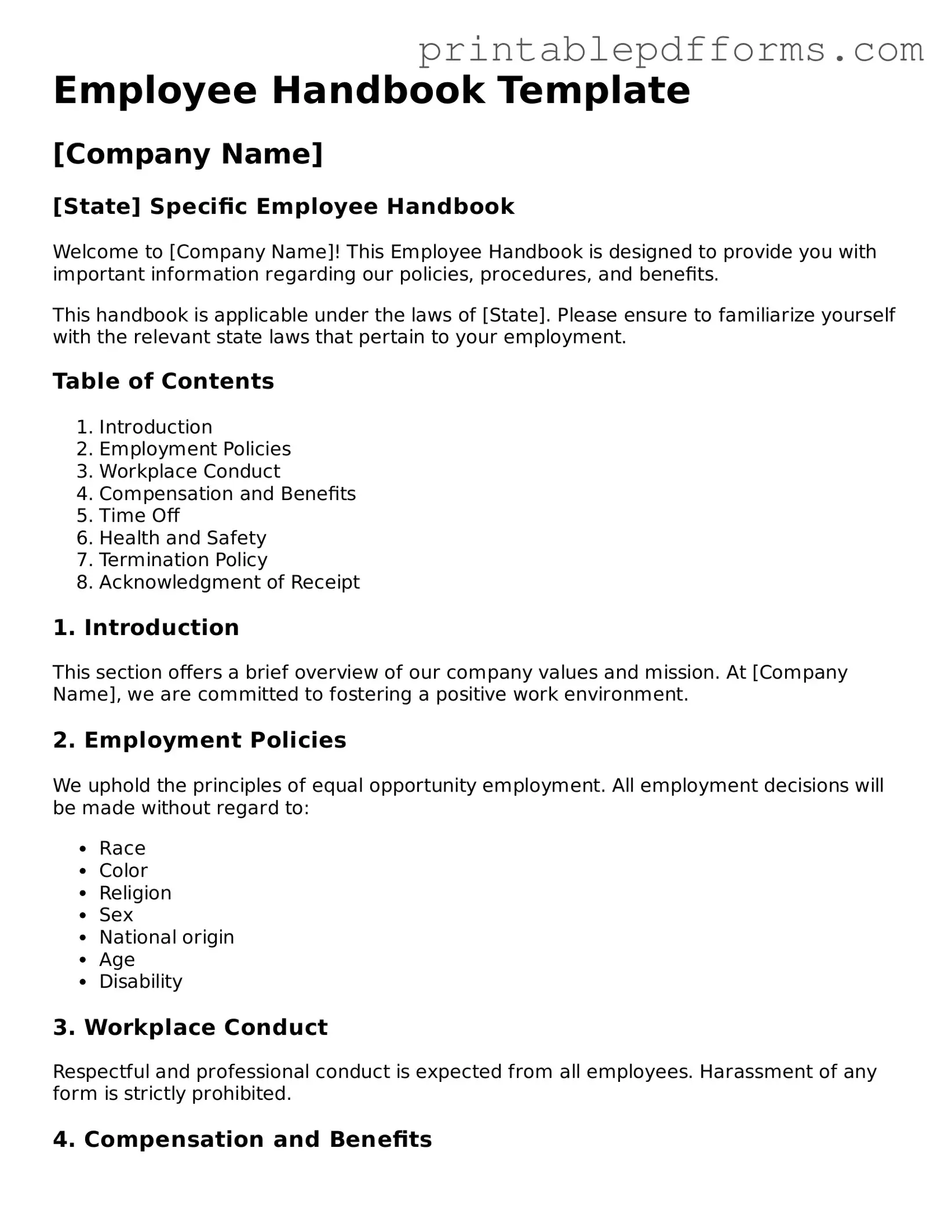Employee Handbook Template
[Company Name]
[State] Specific Employee Handbook
Welcome to [Company Name]! This Employee Handbook is designed to provide you with important information regarding our policies, procedures, and benefits.
This handbook is applicable under the laws of [State]. Please ensure to familiarize yourself with the relevant state laws that pertain to your employment.
Table of Contents
- Introduction
- Employment Policies
- Workplace Conduct
- Compensation and Benefits
- Time Off
- Health and Safety
- Termination Policy
- Acknowledgment of Receipt
1. Introduction
This section offers a brief overview of our company values and mission. At [Company Name], we are committed to fostering a positive work environment.
2. Employment Policies
We uphold the principles of equal opportunity employment. All employment decisions will be made without regard to:
- Race
- Color
- Religion
- Sex
- National origin
- Age
- Disability
3. Workplace Conduct
Respectful and professional conduct is expected from all employees. Harassment of any form is strictly prohibited.
4. Compensation and Benefits
Employees at [Company Name] are entitled to competitive salaries and a variety of benefits including:
- Health Insurance
- Retirement Savings Plan
- Paid time off
- Flexible working hours
5. Time Off
Employees are encouraged to take time off for personal matters, vacations, and illness. Our policy includes:
- Vacation Days
- Sick Leave
- Parental Leave
- Personal Days
6. Health and Safety
Your health and safety at work are our priority. It’s vital that all employees comply with safety guidelines.
7. Termination Policy
We hope your time at [Company Name] will be mutually rewarding. However, either party may terminate employment with appropriate notice.
8. Acknowledgment of Receipt
Please sign below to acknowledge that you have received and understand the Employee Handbook.
Employee Name: _____________________
Date: _____________________
Thank you for being a valued member of [Company Name]. Together, we can create a thriving workplace.
